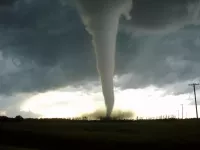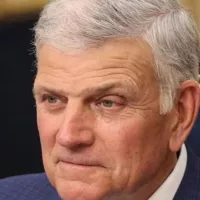College football is a popular amateur sport in the United States, played by student-athletes at universities and colleges. Collegiate competition is where gridiron football first gained popularity in the United States. It serves as a developmental ground for professional players and a major source of revenue for universities. Key aspects include conferences, rivalries, bowl games, and national championships. The sport is governed by organizations such as the NCAA. Many view it as a cultural phenomenon with dedicated fanbases.
May 1900: Yost Hired as Stanford Coach
In May 1900, Yost was hired as the football coach at Stanford University.
August 21, 1900: Yost Arrives at Stanford
On August 21, 1900, Yost arrived in Palo Alto, California, to coach at Stanford University.
December 4, 1900: Death of Fred Lilly
On December 4, 1900, the last victim of the Thanksgiving Day Disaster (Fred Lilly) died, bringing the death toll to 22.
November 22, 1901: First intercollegiate game in Florida
On November 22, 1901, the first intercollegiate game between official varsity teams was played in Florida. Stetson beat Florida Agricultural College at Lake City 6–0.
1901: Yost Hired by Michigan
In 1901, Yost was hired by Charles A. Baird as the head football coach for the Michigan Wolverines football team.
1901: Michigan becomes a national power
In 1901, led by coach Fielding H. Yost, Michigan became the first "western" national power.
January 1, 1902: Yost's Michigan team plays in inaugural Rose Bowl
On January 1, 1902, Yost's dominating 1901 Michigan Wolverines football team agreed to play a 3–1–2 team from Stanford University in the inaugural "Tournament East-West football game" known as the Rose Bowl Game, winning 49–0.
September 27, 1902: Georgetown vs. Navy
On September 27, 1902, Georgetown beat Navy 4 to 0. Georgetown authorities claim this game featured the first ever "roving center" or linebacker, Percy Given.
1902: Michigan participates in the first college football bowl game
In 1902, Michigan had a trip to play in the first college football bowl game, which later became the Rose Bowl Game.
1903: Warner uses hidden ball trick at Carlisle
In 1903, Warner used the hidden ball trick at Carlisle against Harvard and garnered national attention.
1903: SIAA Championship Game
On Thanksgiving Day in 1903, a game was scheduled in Montgomery, Alabama between Cumberland and Heisman's Clemson for an "SIAA championship game". The game ended in an 11–11 tie, and it was Heisman's last game as Clemson head coach.
1904: Big coaching hires in the South
In 1904, big coaching hires occurred in the south: Mike Donahue at Auburn, John Heisman at Georgia Tech, and Dan McGugin at Vanderbilt were all hired that year.
October 9, 1905: Roosevelt meets with football representatives
On October 9, 1905, President Theodore Roosevelt held a meeting of football representatives from Harvard, Yale, and Princeton to discuss eliminating and reducing injuries. He never threatened to ban football.
November 11, 1905: First game at Stanford Field
On November 11, 1905, the Big Game between Stanford and Cal was the first played at Stanford Field, with Stanford winning 12–5.
December 28, 1905: Meeting in New York City to Discuss Rule Changes
On December 28, 1905, 62 schools met in New York City to discuss potential rule changes aimed at improving player safety in college football. This meeting ultimately led to the formation of the Intercollegiate Athletic Association of the United States (IAAUS) in 1906.
1905: Reforms Made to mass formation plays
As a result of the 1905 reforms, mass formation plays became illegal and forward passes legal.
1905: College Football Increasingly Violent
By 1905, college football had increased in popularity. However, it also became increasingly violent. Between 1890 and 1905, 330 college athletes died as a direct result of injuries sustained on the football field.
1905: End of Michigan's undefeated streak
From 1901 to 1905, Michigan had a 56-game undefeated streak.
1905: First Scouting in the South
In 1905, Dan McGugin and Captain Innis Brown of Vanderbilt scouted Sewanee's game against Georgia Tech in Atlanta, marking what is claimed as the first instance of scouting in the South.
September 5, 1906: First Legal Forward Pass in College Football
On September 5, 1906, Bradbury Robinson, playing for Saint Louis University, threw the first legal forward pass in a game against Carroll College at Waukesha. This event marked a significant change in the game after the 1905-1906 reforms legalized forward passes.
1906: First Legal Forward Pass Thrown in the South
In 1906, Fuzzy Woodruff claims that Davidson was the first team in the south to throw a legal forward pass.
1906: Vanderbilt Defeats Carlisle
In 1906, Vanderbilt defeated Carlisle 4 to 0, with the score resulting from a Bob Blake field goal.
1906: Formation of the Intercollegiate Athletic Association of the United States
In 1906, as a result of meetings addressing safety concerns in college football, the Intercollegiate Athletic Association of the United States (IAAUS) was formed. This organization, established as the original rule-making body for college football, would later become the NCAA.
1906: West Coast universities switch to rugby
In 1906, citing concerns about the violence in American Football, universities on the West Coast, led by California and Stanford, replaced the sport with rugby union.
1906: Rugby League Introduces Play-the-Ball Rule
In 1906, rugby league introduced the play-the-ball rule, which greatly resembled Camp's early scrimmage and center-snap rules.
1907: Vanderbilt Ties Navy
In 1907 Vanderbilt fought Navy to a 6 to 6 tie.
1909: Rocky Mountain Athletic Conference Founded
In 1909, the Rocky Mountain Athletic Conference was founded, featuring four members: Colorado, Colorado College, Colorado School of Mines, and Colorado Agricultural College.
1909: Field Goals Lowered to Three Points
In 1909, the scoring rules in college football were changed to lower the value of field goals to three points.
1910: Vanderbilt Ties Yale
In 1910, Vanderbilt held defending national champion Yale to a scoreless tie.
1910: Adoption of Rule Changes to Reduce Injuries
In 1910, several rule changes were formally adopted to reduce collision injuries in college football. These included requiring at least seven offensive players on the line of scrimmage, prohibiting pushing or pulling, and disallowing interlocking interference.
1910: IAAUS renamed National Collegiate Athletic Association (NCAA)
In 1910, the Intercollegiate Athletic Association of the United States (IAAUS) was renamed to the National Collegiate Athletic Association (NCAA). The NCAA still sets rules governing college football.
1910: Universities Join RMAC
In 1910, the University of Denver and the University of Utah joined the Rocky Mountain Athletic Conference (RMAC).
November 25, 1911: First Homecoming Football Game
On November 25, 1911, Kansas played at Missouri in what is recognized as the first homecoming football game. The game was "broadcast" play-by-play over telegraph to fans in Lawrence, Kansas. The game ended in a 3–3 tie.
1911: USC switches to rugby
In 1911, USC switched to rugby, joining other West Coast schools like California and Stanford.
1912: Touchdowns Raised to Six Points
In 1912, the scoring rules in college football were changed to increase the value of touchdowns to six points.
1913: Notre Dame's Upset Victory Over Army
In 1913, Knute Rockne and Gus Dorais led Notre Dame to a 35–13 victory over Army. It helped establish the school as a national power.
1914: Implementation of Roughing-the-Passer Penalty
In 1914, college football implemented the first roughing-the-passer penalty, adding a layer of protection for quarterbacks.
1915: Big Games are played as rugby
In 1915, Stanford played its "Big Game" as rugby union against Santa Clara. California's football "Big Game" in 1915 was against Washington.
1915: Founding of the Southwest Athletic Conference
In 1915, the Southwest Athletic Conference was founded, primarily consisting of schools from Texas.
1915: Yale Bowl Built
In 1915, the Yale Bowl was built and later resembled the shape of the Rose Bowl stadium in 1923.
October 7, 1916: Georgia Tech's 222-0 Victory Over Cumberland
On October 7, 1916, John Heisman's Georgia Tech Golden Tornado defeated Cumberland 222-0 at Grant Field, marking the most lopsided victory in college football history.
1916: Big Games are played as rugby
In 1916, Stanford played its "Big Game" as rugby union against Santa Clara. California's football "Big Game" in 1916 was against Washington.
1916: Rose Bowl Game Reinstated
In 1916, the Tournament of Roses decided to reattempt the postseason game, leading to the Rose Bowl becoming an annual event.
1917: Rise of Centre College as a Southern Powerhouse
1917 saw the rise of another Southern team in Centre of Danville, Kentucky.
1917: Georgia Tech Wins National Championship
In 1917, Georgia Tech became the first national champion from the South. The team was led by a powerful backfield and featured the first two players from the Deep South selected as first-team All-Americans.
1917: Big Games are played as rugby
In 1917, Stanford played its "Big Game" as rugby union against Santa Clara. California's football "Big Game" in 1917 was against Washington.
1917: Auburn Ties Ohio State
In 1917, the Auburn Tigers tied the undefeated Chic Harley-led Big Ten champion Ohio State. This event helped strengthen Georgia Tech's claim to a title that year.
1918: Rockne Returns to Coach Notre Dame
In 1918, Knute Rockne returned to coach the Notre Dame team. He devised the powerful Notre Dame Box offense, based on Warner's single wing.
1918: Loosening of Rules on Eligible Receivers
In 1918, college football rules were adjusted to allow eligible players to catch the ball anywhere on the field, removing previous restrictions that limited passes to certain areas.
1918: Stanford returns to American football
In 1918, the Stanford campus was designated as the Students' Army Training Corps headquarters and American football was reinstated as the appropriate athletic activity.
1919: Heisman leaves Georgia Tech
In 1919, John Heisman left Georgia Tech, however his shift was still employed by protégé William Alexander.
1920: Start of Notre Dame's Consistent Success
By 1920, Notre Dame became one of the most successful teams in college football. Until 1990, Notre Dame won at least a share of the national title every decade.
October 8, 1921: First Live Radio Broadcast of a College Football Game
On October 8, 1921, the game between West Virginia and Pittsburgh was the first live radio broadcast of a college football game, with Harold W. Arlin announcing the Backyard Brawl on KDKA. Pittsburgh won the game 21–13.
1921: Centre College Upsets Harvard
In 1921, Bo McMillin-led Centre College upset defending national champion Harvard 6 to 0. It is considered one of the greatest upsets in college football history.
October 28, 1922: First Nationally Broadcast College Football Game
On October 28, 1922, Princeton and Chicago played the first college football game to be nationally broadcast on radio. Princeton won 21–18.
1923: Rose Bowl Stadium Built
In 1923, the Rose Bowl stadium was built in Pasadena, California, and its shape, resembling the Yale Bowl, led to the term "bowl" being associated with the Rose Bowl Game.
1924: Walter Camp Selects All-American Team
In 1924, Walter Camp personally selected an annual All-American team for the last time. He had been doing this every year from 1889 through 1924.
1924: The Four Horsemen Backfield
In 1924, the Notre Dame team featured the Four Horsemen backfield.
1925: Alabama Wins Rose Bowl
In 1925, Wallace Wade coached Alabama to the South's first Rose Bowl victory. This game is commonly referred to as "the game that changed the south".
1925: Death of Walter Camp
In 1925, Walter Camp passed away. After leaving Yale in 1882, Camp was employed by the New Haven Clock Company until his death in 1925.
1926: Alabama plays in the Rose Bowl after receiving its first national title
Wallace William Wade's 1925 Alabama team won the 1926 Rose Bowl after receiving its first national title.
1927: Georgia's "Dream and Wonder Team" Defeats Yale
In 1927, Georgia's "dream and wonder team" defeated Yale for the first time.
1927: Publication of "Football for Coaches and Players"
In 1927, Glenn "Pop" Warner wrote one of the first important books of football strategy, "Football for Coaches and Players".
1927: Rule Change Due to Rockne's Complex Shifts
In 1927, Knute Rockne's complex shifts led directly to a rule change whereby all offensive players had to stop for a full second before the ball could be snapped.
1928: Georgia Tech Wins National Title
In 1928, William Alexander's Georgia Tech team defeated California in the 1929 Rose Bowl.
October 12, 1929: Yale Loses to Georgia in Sanford Stadium
On October 12, 1929, Yale lost to Georgia in Sanford Stadium in its first trip to the South.
1929: Georgia Tech defeats California in the Rose Bowl
William Alexander's 1928 Georgia Tech team defeated California in the 1929 Rose Bowl.
1930: Alabama Wins National Championship and Rose Bowl
In 1930, Wallace Wade's Alabama team again won a national championship and the Rose Bowl.
1931: Death of Knute Rockne
In 1931, Knute Rockne died in a plane crash. His funeral was broadcast nationally on radio.
1931: USC Awarded National Title
In 1931, the University of Southern California (USC) was awarded the national title.
1932: USC Awarded National Title
In 1932, the University of Southern California (USC) was awarded the national title for the second year in a row.
1933: Period of Rules Committees and Conferences
In 1933, American football historian Parke H. Davis dubbed the years 1894–1933 as the "Period of Rules Committees and Conferences".
1934: Rules Changes Impact Passing Game
In 1934, significant rules changes occurred, enhancing teams' passing abilities. Penalties for incomplete passes were reduced: the loss of five yards for a second incomplete pass in a series and loss of possession for incomplete passes in the end zone were removed. Additionally, the ball's circumference was decreased, making it easier to grip and throw, thereby encouraging more passing plays.
1935: First Heisman Trophy Awarded
In 1935, the Downtown Athletic Club of New York City presented the inaugural Heisman Trophy to Jay Berwanger, a halfback from the University of Chicago. Designed by Frank Eliscu and modeled after New York University player Ed Smith, the trophy was created to recognize the nation's "most outstanding" college football player.
1935: Creation of New Bowl Games
In 1935, two new bowl games were created: the Orange Bowl and the Sugar Bowl and the Sun Bowl.
1936: Jay Berwanger Becomes First NFL Draft Pick
In 1936, Jay Berwanger, who won the first Heisman Trophy in 1935, became the first-ever NFL draft pick.
1936: Associated Press (AP) Poll Began
In 1936, the Associated Press (AP) began its weekly poll of prominent sports writers, ranking all of the nation's college football teams. The final version of the AP poll was used to determine who was crowned the National Champion of college football.
1937: Creation of the Cotton Bowl
In 1937, the Cotton Bowl was created.
1938: TCU Wins National Championship
In 1938, Texas Christian University (TCU) won the national championship.
1939: Texas A&M Wins National Championship
In 1939, Texas A&M won the national championship, following TCU's win in 1938.
1940: Limited Number of Bowl Games
In 1940, there were only five bowl games at the highest level of college football: the Rose, Orange, Sugar, Sun, and Cotton Bowls.
1944: Army Wins National Title
In 1944, with college football players enlisting in the armed forces during World War II, some returned to college. West Point achieved a national title in 1944 under coach Red Blaik.
1945: Army Wins Back-to-Back National Titles
In 1945, under coach Red Blaik, and with players returning from service in World War II, Army secured its second consecutive national title. Doc Blanchard, known as "Mr. Inside," also won the Heisman Trophy in 1945.
1946: Glenn Davis Wins Heisman Trophy
In 1946, Glenn Davis, known as "Mr. Outside", won the Heisman Trophy. Vince Lombardi was on the coaching staff of the Army teams from 1944-1946.
1950: Addition of Three More Bowl Games
By 1950, three more bowl games had been added to the original five, bringing the total to eight.
1950: Oklahoma Wins National Title
In 1950, Oklahoma, coached by Bud Wilkinson, secured a national title, marking the beginning of their dominant run in the decade.
1951: Passing Attempts Averaged 18.9
In 1951, teams averaged 18.9 passing attempts per game. This marks a high point in passing before a shift towards running plays later in the decade.
1952: NCAA Claims Television Broadcasting Rights
In 1952, the NCAA asserted control over all television broadcasting rights for its member institutions' games and exclusively negotiated television rights.
1953: Michigan State Joins Big Ten
In 1953, Michigan State joined the Big Ten athletically and began their run as a "football factory" under coaches Biggie Munn and Duffy Daugherty.
1954: Ohio State Wins National Title
In 1954, Woody Hayes led Ohio State to a national title and won three Big Ten titles.
1955: Oklahoma Wins National Title
In 1955, Oklahoma, coached by Bud Wilkinson, secured a national title.
1956: Oklahoma Wins National Title and Hornung Wins Heisman
In 1956, Oklahoma won another national title. Notre Dame quarterback Paul Hornung also won the Heisman Trophy, despite being on a losing team, making him the only player to achieve this.
1956: Segregation Controversy at Sugar Bowl
In 1956, the Sugar Bowl faced controversy when Georgia's pro-segregationist Governor Griffin publicly threatened Georgia Tech and its President Blake Van Leer for allowing the first African American player to participate in a collegiate bowl game in the South.
1958: NFL Championship Game Impacts College Football Popularity
Following the success of the 1958 NFL Championship Game, college football's national popularity declined relative to the NFL. While both games benefited from television, the NFL became nationally popular while college football maintained strong regional ties.
1966: ABC Sports Begins Broadcasting National Game of the Week
In 1966, ABC Sports started broadcasting a national "Game of the Week", bringing key college football matchups to a national audience for the first time.
1966: Rugby League Introduces Four-Tackle Rule
In 1966, rugby league introduced a four-tackle rule based on Camp's early down-and-distance rules.
1970: Limited Growth in Major College Bowl Games
As of 1970, there were still only eight major college bowl games, indicating slow growth in the number of bowl opportunities.
1972: Rugby League Changes to Six-Tackle Rule
In 1972, rugby league changed the four-tackle rule to a six-tackle rule based on Camp's early down-and-distance rules.
1976: Number of Major College Bowl Games Increases to Eleven
In 1976, the number of major college bowl games increased to eleven, showing moderate growth in bowl game opportunities.
1978: Introduction of National Operating Committee on Standards for Athletic Equipment
With the introduction of National Operating Committee on Standards for Athletic Equipment in 1978, helmet standards has taken leaps and bounds toward being safer for players.
1979: NCAA Committee Proposes Playoff
In 1979, an NCAA committee proposed a four-team playoff following the bowl games; however, little progress was made at that time due to vested economic interests in the bowls.
1980: Fifteen Bowls at Birth of Cable TV
By 1980, with the emergence of cable television and sports networks like ESPN, the number of bowl games had grown to fifteen, reflecting increased national venues and revenue.
1984: Supreme Court Ruling Against NCAA Television Rights
In 1984, a Supreme Court ruling, following a suit under the Sherman Antitrust Act, reversed the NCAA's exclusive control over television rights, allowing schools to negotiate their own television deals.
1990: End of Notre Dame's Championship Drought
By 1990, Notre Dame had recovered from the decline in success of the 1950s, marking the end of the only period between 1920 and 1990 where the team did not win at least a share of the national title.
1992: Formation of the Bowl Coalition
In 1992, seven conferences and independent Notre Dame formed the Bowl Coalition to arrange an annual No. 1 versus No. 2 matchup based on the final AP poll standings. However, scheduling issues limited its success.
1995: Bowl Alliance Replaces Bowl Coalition
In 1995, the Bowl Coalition was replaced by the Bowl Alliance, which reduced the number of bowl games hosting a national championship game to three (Fiesta, Sugar, and Orange Bowls) and the participating conferences to five. This guaranteed a matchup between the No. 1 and No. 2 ranked teams, but still lacked full legitimacy.
1998: Bowl Championship Series (BCS) Created
In 1998, the Bowl Championship Series (BCS) was created by the NCAA to create a definitive national championship game for college football. The series included the four most prominent bowl games (Rose Bowl, Orange Bowl, Sugar Bowl, Fiesta Bowl).
1998: Inauguration of the Bowl Championship Series (BCS)
In 1998, the Bowl Championship Series (BCS) was established, including all major conferences and four major bowl games (Rose, Orange, Sugar and Fiesta). The system ranked schools using polls, computer rankings, and strength of schedule calculations to determine the No.1 and No.2 teams for the national championship game.
2000: Walter Camp attends The Game
In 2000, future "father of American football" Walter Camp was among the 2000 spectators in attendance at the first The Game between Harvard and Yale.
2005: Utah Selected as At-Large Team
In 2005, Utah became the only selection from a BCS non-AQ conference to be chosen as an at-large team for the Bowl Championship Series.
2006: BCS System Adjusted
In 2006, the BCS system was adjusted as the NCAA added a fifth game to the series, called the National Championship Game. This allowed the four other BCS bowls to use their normal selection process to select the teams in their games while the top two teams in the BCS rankings would play in the new National Championship Game.
2006: Addition of BCS National Championship Game
Starting with the 2006 season, a fifth game, the BCS National Championship Game, was added to the schedule, played at the site of one of the four BCS bowl games, one week after the regular bowl game. Rules were also changed to add the champions of five additional conferences, subject to ranking criteria.
2008: Explosive Growth in Bowl Games
From 1980 to 2008, an additional 20 bowl games were added to the schedule, marking an explosive growth in bowl opportunities due to increased exposure and revenue for many schools.
2009: Bowl Game Season
During the 2009 season, there were 34 bowl games, inviting 68 out of 120 Division I FBS teams to participate.
2009: Boise State vs. TCU in Fiesta Bowl
In 2009, Boise State played TCU in the Fiesta Bowl, marking the first time two schools from non-AQ conferences faced each other in a BCS bowl game.
2012: Northern Illinois Reaches BCS Bowl Game
In 2012, Northern Illinois became the last team from the non-AQ ranks to reach a BCS bowl game in the BCS era.
2013: End of the BCS
After the 2013 season, the Bowl Championship Series (BCS) came to an end.
2013: Northern Illinois Plays in Orange Bowl
In 2013, Northern Illinois, the last team from the non-AQ ranks to reach a BCS bowl game in the BCS era, played in and lost the Orange Bowl.
2013: Division I FCS Playoff Expansion
In 2013, the Division I FCS level expanded its playoff structure from 20 to 24 teams to determine the national championship.
2014: Debut of College Football Playoff
At the end of the 2014 season, the four-team College Football Playoff (CFP) debuted, changing the historical lack of an organized tournament to determine the Bowl Subdivision champion. However, the NCAA does not operate the tournament, and its winner is not automatically crowned National Champion.
2014: Financial Losses in Collegiate Football Programs
In 2014, it was found that the majority of major collegiate football programs operated at a financial loss, despite college football bringing in over 1 billion dollars a year.
2014: College Football Playoff Established
In 2014, the College Football Playoff (CFP) was established, replacing the Bowl Championship Series (BCS). Initially, four Division I FBS teams were selected to compete for the national championship. The inaugural champions were the 2014 Ohio State Buckeyes in the four-team playoff.
2014: NAIA Allows NIL Compensation
In 2014, the NAIA initially allowed all student-athletes at its member schools to receive compensation for the use of their name, image, and likeness (NIL).
2014: Start of the College Football Playoff (CFP)
Since the 2014 season, the FBS national champion has been determined by a four-team tournament known as the College Football Playoff (CFP).
2017: CTE Study on Football Players
According to a 2017 study on the brains of deceased gridiron football players, 99% of tested brains of NFL players, 88% of CFL players, 64% of semi-professional players, 91% of college football players, and 21% of high school football players had various stages of CTE.
2020: NAIA Specifies NIL Athletic Participation
Beginning in 2020, the NAIA specifically allowed student-athletes to reference their athletic participation in their endorsement deals related to name, image, and likeness (NIL).
July 2021: NCAA Passes NIL Reform
In July 2021, the NCAA passed its own name, image, and likeness (NIL) reform, mirroring the NAIA's recent reform, after states like California passed legislation allowing NIL compensation.
2021: NCAA Adopts Temporary NIL Rule
On June 3, 2021, the NCAA's board of directors adopted a temporary rule change that opened the door for name, image, and likeness (NIL) activity, allowing schools to set their own policy with minimal guidelines. Then on July 1, 2021, student athletes could start signing endorsements using their name, image and likeness.
2023: Separate NCAA Rules Committees Established
In 2023, as part of an NCAA initiative to give each division more autonomy over its governance, separate rules committees were established for each NCAA division. Previously, a single NCAA Football Rules Committee determined the playing rules for Division I, II, and III games.
2024: Agreement Reached on CFP Expansion
An agreement was reached on CFP expansion to 12 teams effective with the 2024 season.
2024: Expansion of College Football Playoff to 12 Teams
In 2024, the College Football Playoff expanded to a 12 team tournament. The first round is held at campus sites, with the quarterfinals and semifinals hosted by New Year's Six bowls.
2024: College Football Playoff Expansion
Prior to the 2024 season, the College Football Playoff expanded to include twelve teams, with a committee selecting the participants. The inaugural twelve-team playoff was won by the 2024 Ohio State Buckeyes. This was modified prior to the 2024 season, allowing twelve teams, four of which being conference champions, to compete for a FBS national championship
2025: No Schools Field Both Club and Sprint Teams
As of 2025, no schools field both club and sprint teams at the same time, though colleges fielding NCAA teams are not restricted from fielding club or sprint teams.
2025: Ohio State Buckeyes Win College Football Playoff
In the 2025 College Football Playoff, the Ohio State Buckeyes defeated the Notre Dame Fighting Irish with a score of 34-23.
2026: Contractual Lock-in of CFP Arrangement
The arrangement for the College Football Playoff (CFP) with the New Year's Six (NY6) bowl games was contractually locked in until the 2026 season.
Mentioned in this timeline
California is a U S state on the Pacific Coast...

Football is a family of team sports primarily involving kicking...
Virginia officially the Commonwealth of Virginia is a state located...
Florida a state in the Southeastern United States is largely...

A tornado is a rotating column of air connecting the...

Chicago is the most populous city in Illinois and the...
Trending

6 months ago Drew Carey's 'Price Is Right' buzz: Player wins big, spills secrets, and stuns fans.
2 months ago Prince George's Royal Debut: Joins Kate, King Charles at Remembrance Festival.
6 months ago Egypt seeks regional stability via dialogue, rejects Israeli escalation, Sissi tells Iran.

3 months ago Neil Patrick Harris and David Burtka Release New Cocktail and Mocktail Recipe Book.
5 months ago Musk Threatens Apple with Lawsuit Over App Store and OpenAI Favoritism.
3 months ago IonQ Stock Surges After Quantum Networking Breakthrough: A Quantum Internet Revolution?
Popular

XXXTentacion born Jahseh Dwayne Ricardo Onfroy was a controversial yet...

Ben Shapiro is a prominent American conservative political commentator media...

Candace Owens is an American conservative political commentator and author...

William Franklin Graham III commonly known as Franklin Graham is...
The Kennedy Center Honors are annual awards recognizing individuals and...

Stranger Things created by the Duffer Brothers is a popular...
